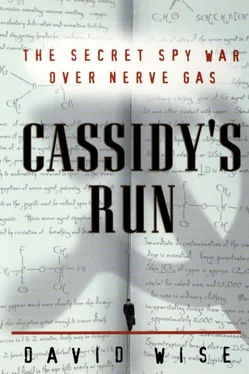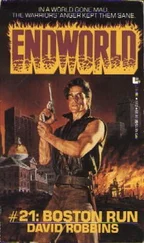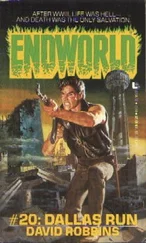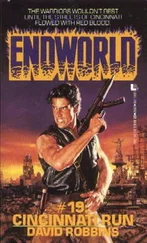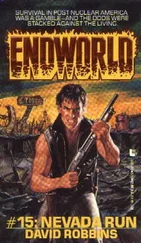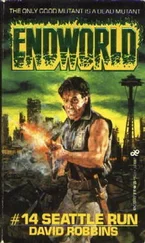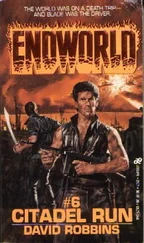The FBI had decided in advance not to try to follow whoever appeared at the drop. SHOCKER had been running for twelve years, and O’Flaherty was not about to blow the operation by putting men on the street; if the spy became aware that he was being tailed, the game would be over. “We wanted fixed surveillance for security reasons, no cars,” he said.
Luck was on the bureau’s side. The unknown spy had forgotten to leave a paper bag by the palm tree to signal that the drop had been cleared. He realized his mistake and came back. Seven minutes later, at 9:30 P.M., a light blue Volkswagen suddenly appeared. The man jumped out, with the car’s motor running, and left a Publix supermarket bag at the base of the tree. Then he got back in his car and zoomed away.
Through their night-vision scope, the photographers could make out the license plate: 1E-17128. From the condo, O’Flaherty called Joseph F. Santoiana, Jr., the FBI’s special agent in charge (SAC) in Tampa, at his home. The SAC called in the license number and asked Tampa to run the plate. By the time O’Flaherty and his team reached the office, they had their answer. The Volkswagen belonged to a rental agency in Miami. Around midnight, teletypes were sent out to Miami and to FBI headquarters in Washington reporting all that had happened.
SHOCKER had surfaced an unknown spy and created a new case. The FBI gave it a separate code name: PALMETTO.
Now the FBI’s task was to identify the man. Before dawn, a teletype arrived from headquarters instructing Tampa and Miami to follow up but emphasizing that the surveillance be discreet.
The FBI was moving with an excess of caution. “Sure, we could have staked out the rental agency,” O’Flaherty said, “but they [headquarters] were very concerned about blowing the case.”
At 7 A.M., Special Agent Sam Jones, of the FBI’s Miami office, checked with the rental agency in Miami, an establishment known as Lester-U-Drive-It. Donald W. MacArthur, the manager, identified the man who had rented the car and returned it an hour earlier. He was apparently Mexican but had produced a Canadian driver’s license. The name on the license was Gilberto Lopez y Rivas.
MacArthur remembered that when Lopez rented the car, he had said that he had arrived in Miami on a Greyhound bus. Jones reasoned that he might have left the same way. The FBI man went to the Greyhound terminal and spoke to the ticket clerk. Jones brought with him the photographs taken through the night scope. But the clerk shook his head; he could not remember selling the man a ticket.
“You know how many people we get going through here?” the clerk asked. He paused, then recalled something. “Wait a second—bad breath! The guy had bad breath! I remember him now.” The clerk had given the man directions to San Antonio. He suggested the most direct route, but Lopez bought a ticket on an earlier bus with stops in New Orleans and Houston.
“Now we alerted all the divisions along the way,” O’Flaherty said. “FBI agents were watching the Greyhound terminals in all three cities, New Orleans, Houston, and San Antonio.
“Several agents were getting on buses to try to spot him. The Greyhound with Lopez aboard arrived in New Orleans the next day. The FBI saw him on the bus. Agents boarded the bus in New Orleans and watched him leave the bus in Houston. He took a cab to Houston Intercontinental Airport.” The agents did not want to get in too close and did not trail the taxi, though they later interviewed the driver. He said his passenger had entered the terminal. Checking further, the FBI established that he had boarded a Braniff flight to Mexico City. Jean Hadid, a Braniff ticket agent at the airport, identified Lopez.
Lopez was gone, at least for the moment, south of the border. The FBI knew nothing about him yet, except his name, if it was his real one. But O’Flaherty knew one thing, as he looked back on the kaleidoscopic events of the last forty-eight hours: Something unprecedented in the history of espionage had occurred. The man who called himself Gilberto Lopez y Rivas was the first illegal ever surfaced by a double-agent operation of the FBI.
Having traced theman in the white slacks to Mexico City, the FBI made an astonishing discovery. Gilberto Lopez y Rivas, on an espionage mission to Florida for Soviet intelligence, had rented the Volkswagen in his true name.
The bureau now had enjoyed two lucky breaks. Had Lopez not initially forgotten to leave the Publix bag at the drop site, or had he used false credentials to rent the car in Miami, the FBI might never have identified the skinny young man who picked up WALLFLOWER’s three rocks on Snell Isle.
Gradually, the details about Lopez emerged. The son of Gilberto Esparza Lopez, an accountant, and Rosa Morgado Rivas Lopez, he was born in Mexico City on March 6, 1943, which meant that he was celebrating his twenty-eighth birthday on the day that the FBI agents had watched and photographed him from Jerry Koontz’s condo.
Lopez attended the Universidad Nacional Autónoma de México, where he earned a master’s degree in 1969. For two years, from 1967 to 1969, while a student at the university, he was a research assistant in anthropology for the International Olympic Committee in Mexico City. [1] It was in October 1968, while Lopez worked for the Olympic Committee, that Cassidy attended the games in Mexico City and waited in vain in the barrio for the Soviet contact who never came.
In 1968 Lopez had married another anthropology student, Alicia Castellanos. The couple had a boy, Nayar, and later another child, Ali.
Lopez was a leftist and an intellectual, and it was clear that his central concern—and possibly the driving force behind his decision to engage in clandestine work for the GRU—was his outrage over the treatment of Mexicans and Mexican Americans in the United States.
Fury over the plight of Chicanos in America appeared in almost all of his published writings. In 1971, the same year that the FBI identified him, Lopez published Los Chicanos: Una minoría nacional explotada . [2] Mexico: Editorial Nuestro Tiempo, 1971; 3d ed., 1979. The title translates as The Chicanos: An Exploited National Minority. Lopez has also been published in English. See The Chicanos: Life and Struggles of the Mexican Minority in the United States (New York: Monthly Review Press, 1973).
The book’s title reflected his view of the United States as a nation of ruthless gringos exploiting poor Mexicans.
Many Mexicans and Americans have sympathized with the problems faced by Mexican Americans, especially migrant workers who often toil in terrible, unsanitary conditions, performing backbreaking labor for low wages. Millions of Americans supported the efforts of Cesar Chavez to organize the grape and lettuce workers in California. Most of those who champion the attempts of Mexican Americans to achieve a better life, however—even those who are harsh critics of American society—do not act on their views by becoming spies against the United States. Lopez did. Somewhere along the line, probably while he was a student at Mexico’s national university, Gilberto Lopez was recruited and trained by the GRU.
Five months after he had flown back to Mexico, Lopez reentered the United States at Brownsville in August 1971, with his family. Through records of the Immigration and Naturalization Service, the FBI learned his destination: Salt Lake City. Lopez, as it developed, was returning to school. He was working toward his Ph.D. in anthropology at the University of Utah.
He was placed under surveillance in Salt Lake City, and his apartment was wiretapped and bugged. George M. Owen, an FBI wireman, was sent out from headquarters to install the electronic surveillance on the PALMETTOS. [3] Although PALMETTO was the FBI code name for the Lopez phase of the operation, the term was used interchangeably to refer to the case, to Lopez himself, or in plural form to Lopez and his wife, Alicia.
Читать дальше
